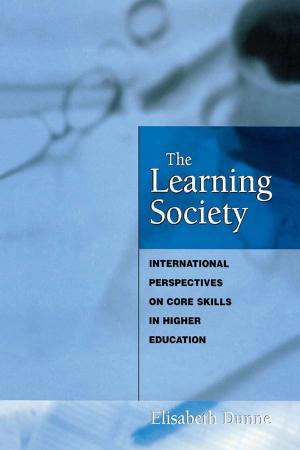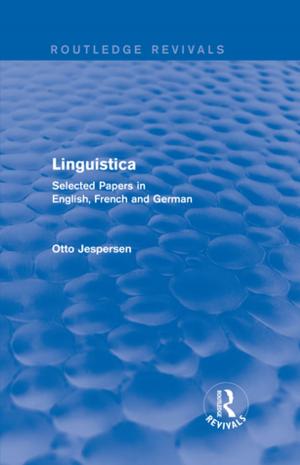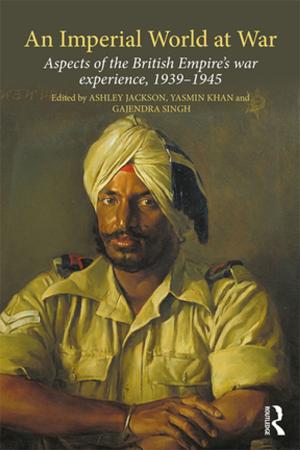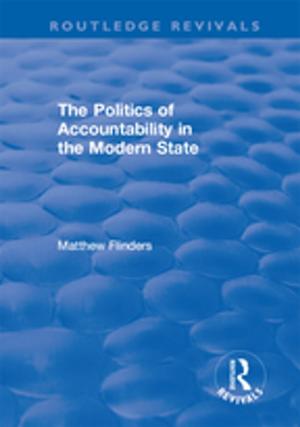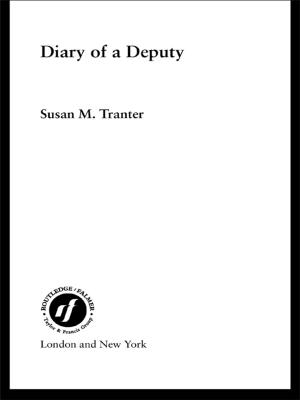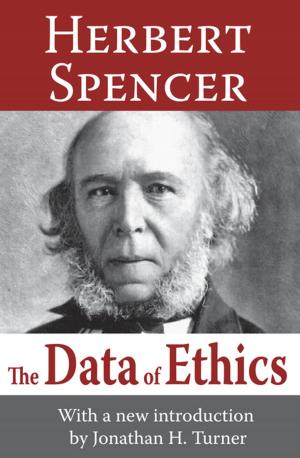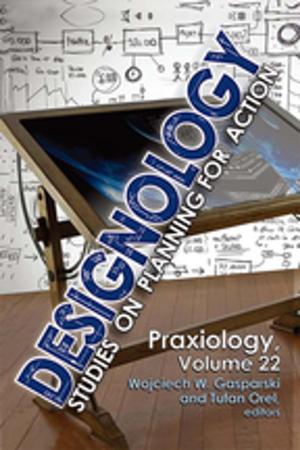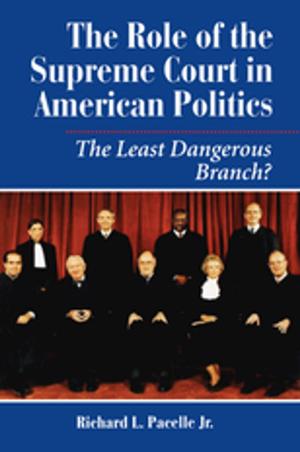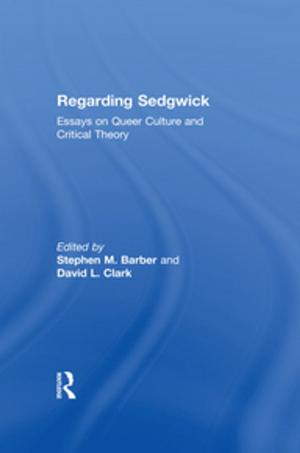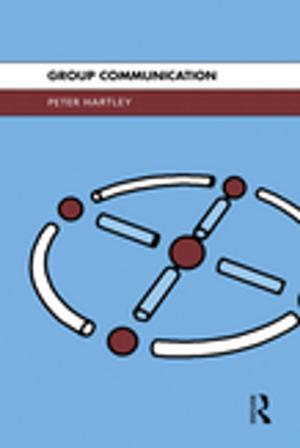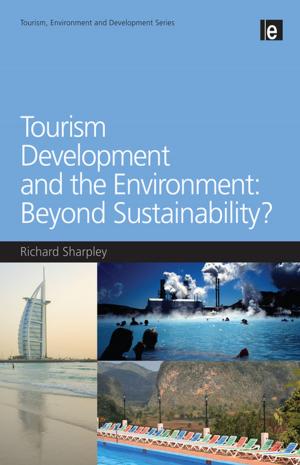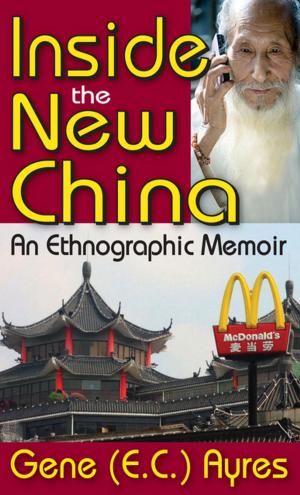Wordplay and Translation
Special Issue of 'The Translator' 2/2 1996
Nonfiction, Reference & Language, Language Arts, Linguistics| Author: | ISBN: | 9781134965885 | |
| Publisher: | Taylor and Francis | Publication: | April 29, 2016 |
| Imprint: | Routledge | Language: | English |
| Author: | |
| ISBN: | 9781134965885 |
| Publisher: | Taylor and Francis |
| Publication: | April 29, 2016 |
| Imprint: | Routledge |
| Language: | English |
Extended Special Issue
Spik in Glyph? Translation, Wordplay and Resistance in Chicano Poetry, pp 141-160 Tace Hedrick (Comparative Literature, Penn State Harrisburg, USA)This paper examines the nature of contemporary bilingual Chicano poetry from the 1970s to the present, particularly in terms of the poetic use of bilingual wordplay and the questions it raises about the uses and possibilities of translation. Using Walter Benjamin's essay 'The Task of the Translator' as a touchstone, and positing a metaphorical link between translation and transfer, the paper looks at bilingual wordplay as a kind of bridging-over or translation of one language into the other, crossing and breaking down borders and hierarchies between the two languages. To illustrate this, cultural practices and uses of bilingualism are examined from both a sociolinguistic and a poetic point of view, with examples of how puns, (mis)pronunciations, slang, loanwords, and mixtures of Spanish and English are used in bilingual poetry for formal and polemical effect.
Meaningful Literary Names:Their Forms and Functions, and their Translation, pp 161-178 Luca Manini (Montalto, Italy)Proper nouns, which have a special status within the language system as opposed to common nouns, can be used as characterizing devices in literary texts and so become a meaningful element in the texture of such works. Names can in this way be endowed with an extra semantic load that makes them border on wordplay. The presence of meaningful literary names is likely to cause problems when the text is to be translated, the question being not only whether the transposition of such names in the target language is technically possible, but also to what extent this would be viewed as an appropriate procedure. This paper, which reflects research in progress, explores the issue by analyzing a two-part corpus of texts: The first part consists of twentieth-century Italian translations of English Restoration comedies and the second of Italian translations of Dickens's novels. There are occasional references to other English literary texts from the medieval and Renaissance periods as well. Technical problems of translating proper nouns are taken into consideration, along with other factors which may influence the translator's choices, such as genre, intended audience, cultural tradition and general norms of translation.
The Pitfalls of Metalingual Use in Simultaneous Interpreting, pp 179-198 Sergio Viaggio (United Nations, Vienna, Austria)For the simultaneous interpreter, puns and other instances of metalingual use, involving as they do an interplay of form, content and pragmatic intention, may represent a formidable challenge. The intepreter's most efficient tool is his or her adroitness at determining the pun's or the metalingual comment's relevance on the basis of an instant analysis of the communication situation, with particular attention to the speaker's pragmatic intention and intended sense, as well as the audience's needs and expectations. Actual examples from United Nations meeting are used to illustrate the different factors affecting the rendition of wordplay and metalanguage and some suggestions are made towards improving the training of interpreters.
Caught in the Frame: A Target-Culture Viewpoint on Allusive Wordplay, pp 199-218Ritva Leppihalme (University of Helsinki, Finland)Allusive wordplay-stretches of preformed linguistic material (or frames) that have undergone lexical, grammatical, or situational modification - is so culture-specific that it is not only hard for translators working from a foreign language to translate but easy for them to miss altogether. This paper discusses examples of allusive wordplay in English fiction and journalism and reports on an experiment designed to investigate the recognition of frames and carried out on twenty-one Finnish university students of English. Student translations of some of the examples are also discussed. It is argued that a translator who wants to produce a coherent target text and to avoid 'culture bumps' (Archer 1986) must above all pay attention to the function of the wordplay in the relevant context. Passages that include modified frames will often need to be rewritten, as attempts to evoke source-culture frames are unlikely to work with target-culture readers to whom such frames are unfamiliar. Target-culture frames, on the other hand, my be puzzling in a text which is set in the source-culture context.
'Curiouser and Curiouser': Hebrew Translation of Wordplay in 'Alice's Adventures in Wonderland', pp 219-234 Rachel Weissbrod (The Open University of Israell) In 'Alice's Adventures in Wonderland', wordplay has a central role in producing an ambivalent text, that is, one which can function at one and the same time in children's literature and in adult literature. This paper examines, from a norm-oriented approach, how instances of wordplay were treated in three Hebrew translations. The first translation, published in 1923, was subject to a norm which required acceptability at the socio-cultural level. Instances of wordplay were accordingly replaced by completely new ones that were rooted in Jewish tradition. In the second translation, published in 1951, the treatment of wordplay was determined by a different norm, one which required a rephrasing of Carroll's work in an elevated style. Only in the third translation, published in 1987, was the translator sufficiently free from socio-cultural and stylistic dictates to cope with Carroll's wordplay with all the means available. In this last translation, elements which are foreign to Carroll's world or style are introduced only insofar as they helped the translator replace the original wordplay.
Translating Jokes for Dubbed Television Situation Comedies, pp 235-257 Patrick Zabalbeascoa (Universitat Pompeu Fabra, Barcelona, Spain) This paper examines Catalan and Spanish dubbed versions of English TV comedy series such as 'Yes, Minister', with special attention to wordplay as a particular instance of the more general problem of translating comedy for television. The objective is to show that producing foreign-language dubbed versions of audiovisual texts has enough in common with other types of translating assignments to be included within translation studies, as well as to contribute to the area of quality assessment and evaluation of translations by proposing that the criteria for judging a translation should be clear, flexible and realistic, and should take into account the translator's limitations and working environment. The paper also proposes a classification of jokes, with further examples from translations of British situation comedy into Catalan, and presents the concept of 'stylebook' as a helpful bridge between general statements about translation and specific contextualized translating assignments.
Dante's Puns in English and the Question of Compensation, pp 259-276 Edoardo Crisafulli (University College, Dublin, Ireland) After a comparative analysis of the source and target texts, this paper attempts to put forward an explanation to account for H. F. Cary's avoidance policy as he deals with Dante's puns in his early nineteenth-century translation of the 'Divina Commedia'. The aim is to consider the findings of the analysis in relation to the issue of compensation. No discussion of translation can avoid dealing with this issue, but there is evidence that compensation cannot be called upon to account for all the foregrounding devices in the target text. In particular, the relationship between compensation and the translator's ideology must be taken into account. The paper concludes by suggesting some conditions which might make it easier to identify instances of compensation. Harvey's (1995) descriptive framework is employed with a view to improving its explanatory power.
No-Man's Land on the Common Borders of Linguistics, Philosophy & Sinology: Polysemy in the Translation of Ancient Chinese Texts, pp 277-304 Seán Golden (Universitat Autònoma de Barcelona, Spain)This paper treats polysemy as the driving force of ancient Chinese rhetoric, inherent in the language and its system of writing, not just as an embellishment but as the very basis of discourse, and intrinsic to the multiple meanings expressed by the text; in this way, text may represent a worldview that is radically different from the Western one and that is encoded syntactically, semantically, rhetorically, and visually (in the case of the Chinese written character) in the language. This challenges the comprehension of ancient Chinese texts by translators and their reproduction in languages that share neither the worldview nor the multiple codes involved. From the no-man's land on the common borders of linguistics, philosophy and sinology, the translator may glimpse the horizon of understanding within which the original operates, while knowing that the readership of a translation is looking at a different horizon. Better understanding of this fact by the translator should contribute to a better interpretation of the multiple meanings contained in the original and to a translation that maintains as many meanings as possible.
Revisiting the Classics
A Question of Form. The Problems of Translating Expressive Text: Review of Rudolf Zimmer's Probleme der Übersetzung formbetonter Sprache (Peter Fawcett, UK)
Book Reviews
Suzanne Jill Levine: The Subversive Scribe (Tom Conley, USA) Frank Heibert: Das Wortspiel als Stilmittel und seube Übersetzung (Cees Koster, The Netherlands) Brigitte Schultze & Horst Turk (eds): Differente Lachkulturen? Fremde Komik und ihre Übersetzung (Dirk Delabastita, Belgium) Jacqueline Henry: La traduction des jeux de mots (Ronald Landheer, The Netherlands) Dirk Delabastita: There's a Double Tongue (Dirk De Geest, Belgium)
Course Profile
Wordplay and the Didactics of Translation (Michel Ballard, France)
Wordplay and Translation: A Selective Bibliography (Dirk Delabastita, Belgium & Jacqueline Henry, France)
Extended Special Issue
Spik in Glyph? Translation, Wordplay and Resistance in Chicano Poetry, pp 141-160 Tace Hedrick (Comparative Literature, Penn State Harrisburg, USA)This paper examines the nature of contemporary bilingual Chicano poetry from the 1970s to the present, particularly in terms of the poetic use of bilingual wordplay and the questions it raises about the uses and possibilities of translation. Using Walter Benjamin's essay 'The Task of the Translator' as a touchstone, and positing a metaphorical link between translation and transfer, the paper looks at bilingual wordplay as a kind of bridging-over or translation of one language into the other, crossing and breaking down borders and hierarchies between the two languages. To illustrate this, cultural practices and uses of bilingualism are examined from both a sociolinguistic and a poetic point of view, with examples of how puns, (mis)pronunciations, slang, loanwords, and mixtures of Spanish and English are used in bilingual poetry for formal and polemical effect.
Meaningful Literary Names:Their Forms and Functions, and their Translation, pp 161-178 Luca Manini (Montalto, Italy)Proper nouns, which have a special status within the language system as opposed to common nouns, can be used as characterizing devices in literary texts and so become a meaningful element in the texture of such works. Names can in this way be endowed with an extra semantic load that makes them border on wordplay. The presence of meaningful literary names is likely to cause problems when the text is to be translated, the question being not only whether the transposition of such names in the target language is technically possible, but also to what extent this would be viewed as an appropriate procedure. This paper, which reflects research in progress, explores the issue by analyzing a two-part corpus of texts: The first part consists of twentieth-century Italian translations of English Restoration comedies and the second of Italian translations of Dickens's novels. There are occasional references to other English literary texts from the medieval and Renaissance periods as well. Technical problems of translating proper nouns are taken into consideration, along with other factors which may influence the translator's choices, such as genre, intended audience, cultural tradition and general norms of translation.
The Pitfalls of Metalingual Use in Simultaneous Interpreting, pp 179-198 Sergio Viaggio (United Nations, Vienna, Austria)For the simultaneous interpreter, puns and other instances of metalingual use, involving as they do an interplay of form, content and pragmatic intention, may represent a formidable challenge. The intepreter's most efficient tool is his or her adroitness at determining the pun's or the metalingual comment's relevance on the basis of an instant analysis of the communication situation, with particular attention to the speaker's pragmatic intention and intended sense, as well as the audience's needs and expectations. Actual examples from United Nations meeting are used to illustrate the different factors affecting the rendition of wordplay and metalanguage and some suggestions are made towards improving the training of interpreters.
Caught in the Frame: A Target-Culture Viewpoint on Allusive Wordplay, pp 199-218Ritva Leppihalme (University of Helsinki, Finland)Allusive wordplay-stretches of preformed linguistic material (or frames) that have undergone lexical, grammatical, or situational modification - is so culture-specific that it is not only hard for translators working from a foreign language to translate but easy for them to miss altogether. This paper discusses examples of allusive wordplay in English fiction and journalism and reports on an experiment designed to investigate the recognition of frames and carried out on twenty-one Finnish university students of English. Student translations of some of the examples are also discussed. It is argued that a translator who wants to produce a coherent target text and to avoid 'culture bumps' (Archer 1986) must above all pay attention to the function of the wordplay in the relevant context. Passages that include modified frames will often need to be rewritten, as attempts to evoke source-culture frames are unlikely to work with target-culture readers to whom such frames are unfamiliar. Target-culture frames, on the other hand, my be puzzling in a text which is set in the source-culture context.
'Curiouser and Curiouser': Hebrew Translation of Wordplay in 'Alice's Adventures in Wonderland', pp 219-234 Rachel Weissbrod (The Open University of Israell) In 'Alice's Adventures in Wonderland', wordplay has a central role in producing an ambivalent text, that is, one which can function at one and the same time in children's literature and in adult literature. This paper examines, from a norm-oriented approach, how instances of wordplay were treated in three Hebrew translations. The first translation, published in 1923, was subject to a norm which required acceptability at the socio-cultural level. Instances of wordplay were accordingly replaced by completely new ones that were rooted in Jewish tradition. In the second translation, published in 1951, the treatment of wordplay was determined by a different norm, one which required a rephrasing of Carroll's work in an elevated style. Only in the third translation, published in 1987, was the translator sufficiently free from socio-cultural and stylistic dictates to cope with Carroll's wordplay with all the means available. In this last translation, elements which are foreign to Carroll's world or style are introduced only insofar as they helped the translator replace the original wordplay.
Translating Jokes for Dubbed Television Situation Comedies, pp 235-257 Patrick Zabalbeascoa (Universitat Pompeu Fabra, Barcelona, Spain) This paper examines Catalan and Spanish dubbed versions of English TV comedy series such as 'Yes, Minister', with special attention to wordplay as a particular instance of the more general problem of translating comedy for television. The objective is to show that producing foreign-language dubbed versions of audiovisual texts has enough in common with other types of translating assignments to be included within translation studies, as well as to contribute to the area of quality assessment and evaluation of translations by proposing that the criteria for judging a translation should be clear, flexible and realistic, and should take into account the translator's limitations and working environment. The paper also proposes a classification of jokes, with further examples from translations of British situation comedy into Catalan, and presents the concept of 'stylebook' as a helpful bridge between general statements about translation and specific contextualized translating assignments.
Dante's Puns in English and the Question of Compensation, pp 259-276 Edoardo Crisafulli (University College, Dublin, Ireland) After a comparative analysis of the source and target texts, this paper attempts to put forward an explanation to account for H. F. Cary's avoidance policy as he deals with Dante's puns in his early nineteenth-century translation of the 'Divina Commedia'. The aim is to consider the findings of the analysis in relation to the issue of compensation. No discussion of translation can avoid dealing with this issue, but there is evidence that compensation cannot be called upon to account for all the foregrounding devices in the target text. In particular, the relationship between compensation and the translator's ideology must be taken into account. The paper concludes by suggesting some conditions which might make it easier to identify instances of compensation. Harvey's (1995) descriptive framework is employed with a view to improving its explanatory power.
No-Man's Land on the Common Borders of Linguistics, Philosophy & Sinology: Polysemy in the Translation of Ancient Chinese Texts, pp 277-304 Seán Golden (Universitat Autònoma de Barcelona, Spain)This paper treats polysemy as the driving force of ancient Chinese rhetoric, inherent in the language and its system of writing, not just as an embellishment but as the very basis of discourse, and intrinsic to the multiple meanings expressed by the text; in this way, text may represent a worldview that is radically different from the Western one and that is encoded syntactically, semantically, rhetorically, and visually (in the case of the Chinese written character) in the language. This challenges the comprehension of ancient Chinese texts by translators and their reproduction in languages that share neither the worldview nor the multiple codes involved. From the no-man's land on the common borders of linguistics, philosophy and sinology, the translator may glimpse the horizon of understanding within which the original operates, while knowing that the readership of a translation is looking at a different horizon. Better understanding of this fact by the translator should contribute to a better interpretation of the multiple meanings contained in the original and to a translation that maintains as many meanings as possible.
Revisiting the Classics
A Question of Form. The Problems of Translating Expressive Text: Review of Rudolf Zimmer's Probleme der Übersetzung formbetonter Sprache (Peter Fawcett, UK)
Book Reviews
Suzanne Jill Levine: The Subversive Scribe (Tom Conley, USA) Frank Heibert: Das Wortspiel als Stilmittel und seube Übersetzung (Cees Koster, The Netherlands) Brigitte Schultze & Horst Turk (eds): Differente Lachkulturen? Fremde Komik und ihre Übersetzung (Dirk Delabastita, Belgium) Jacqueline Henry: La traduction des jeux de mots (Ronald Landheer, The Netherlands) Dirk Delabastita: There's a Double Tongue (Dirk De Geest, Belgium)
Course Profile
Wordplay and the Didactics of Translation (Michel Ballard, France)
Wordplay and Translation: A Selective Bibliography (Dirk Delabastita, Belgium & Jacqueline Henry, France)

